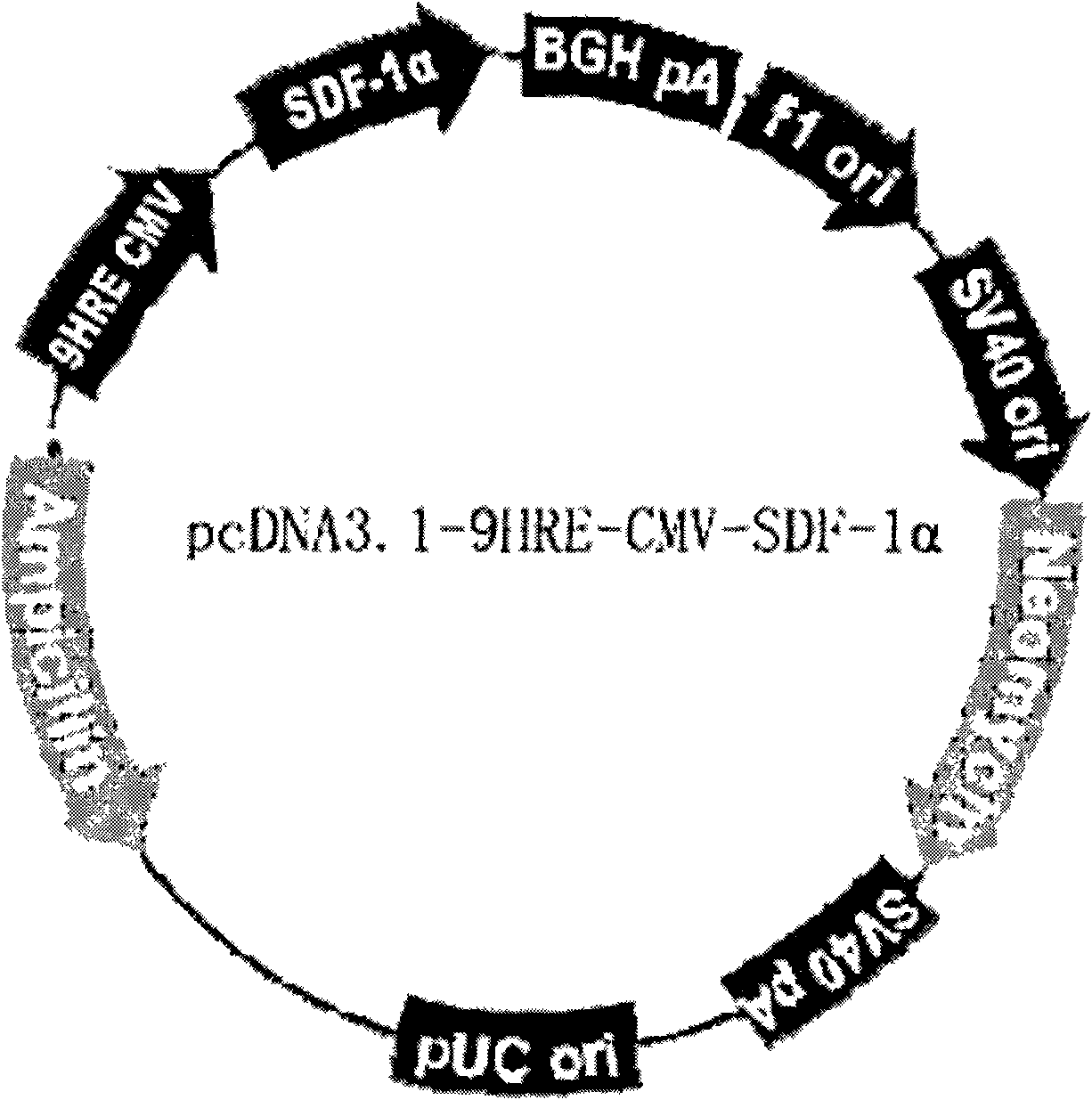Skin substitute for automatically capturing endothelial progenitor cells and promoting vascularization and construction method thereof
A technology of automatic capture of endothelial progenitor cells, applied in the field of new skin substitutes, can solve the problems of low survival rate, poor EPC adhesion, stem cell differentiation, etc., and achieve the effect of improving chemotaxis induction, improving safety, and accelerating vascularization
- Summary
- Abstract
- Description
- Claims
- Application Information
AI Technical Summary
Problems solved by technology
Method used
Image
Examples
Embodiment 1
[0031] Example 1. Preparation of a new skin substitute that can automatically capture endothelial progenitor cells to promote vascularization
[0032] 1. Isolation and culture of human keratinocytes and fibroblasts:
[0033] The discarded foreskin tissue after circumcision was used to separate and culture keratinocytes and fibroblasts by enzymatic digestion. Separately prepared into a single cell suspension, according to 2-3 × 10 5 Cells per ml were seeded in culture flasks and placed in a 37°C incubator. Keratinocytes were cultured in serum-free medium (DK-SFM, Gibco, USA), and fibroblasts were cultured in complete DMEM medium (Gibco, USA). USA) for culture, and when the cells reach 70%-80% confluence, passage and expansion are carried out.
[0034] 2. Construction of vectors containing SDF-1α gene expression
[0035] Sequence of SDF-1α gene:
[0036] ATGAACGCCAAGGTCGTGGTCGTGCTGGTCCTCGTGCTGACCGCGCTCTGCCTCAGCGACGGGAAGCCCGTCAGCCTGAGCTACAGATGCCCATGCCGATTCTTCGAAAGCCATGTTGCCAG...
Embodiment 2
[0046] Embodiment 2. Animal transplantation test of skin substitute of the present invention
[0047] Male Balb / c-nu mice (nude mice, provided by Shanghai Xipro-Bichem Experimental Animal Co., Ltd.), weighing 18±2 grams, 40 were divided into four groups. Skin substitutes containing transfected SDF-1α gene fibroblasts, skin substitutes containing transfected ends plus pcDNA3.1-9HRE-CMV-SDF-1α fibroblasts, fibroblasts containing transfected empty vector Skin substitutes of cells and normal fibroblasts that have not been transfected with the gene.
[0048] After the nude mice were anesthetized with ketamine intraperitoneally, the skin and hair on the back were shaved, and the full-thickness skin on the ventral side of the spine and the deep fascia up to the muscle layer were excised. The active skin substitutes cultured in vitro for 2-3 weeks as described in Example 1 were transplanted on the wound surface. In order to prevent periwound skin shrinkage and epidermis crawling, wh...
PUM
 Login to View More
Login to View More Abstract
Description
Claims
Application Information
 Login to View More
Login to View More - R&D
- Intellectual Property
- Life Sciences
- Materials
- Tech Scout
- Unparalleled Data Quality
- Higher Quality Content
- 60% Fewer Hallucinations
Browse by: Latest US Patents, China's latest patents, Technical Efficacy Thesaurus, Application Domain, Technology Topic, Popular Technical Reports.
© 2025 PatSnap. All rights reserved.Legal|Privacy policy|Modern Slavery Act Transparency Statement|Sitemap|About US| Contact US: help@patsnap.com

